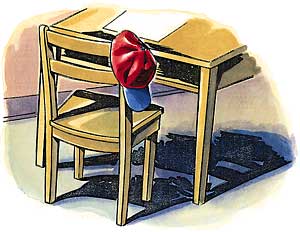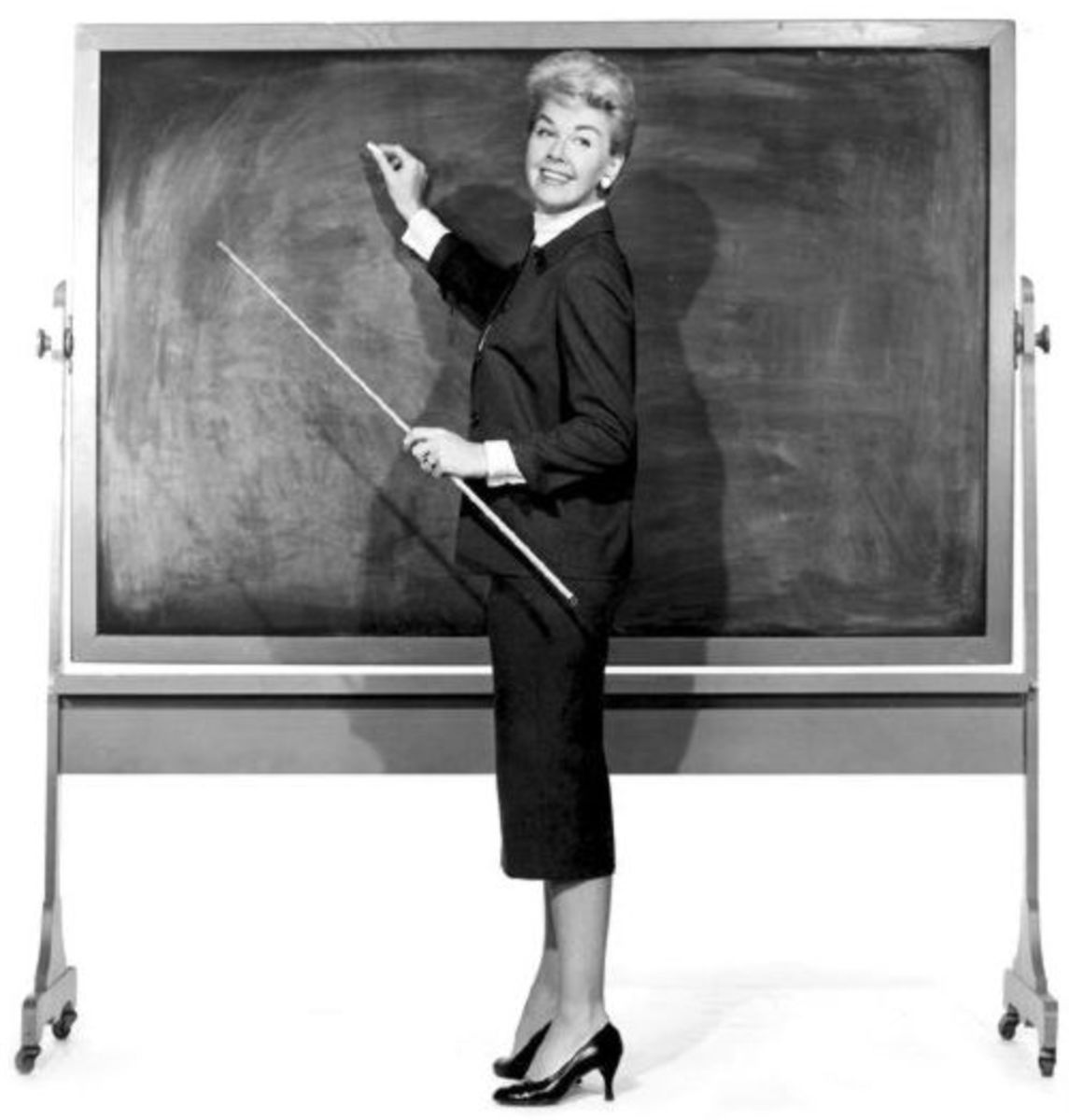The Classroom Environment And The Gender Education Gap

Dr. Warren Farrell On The Boy Crisis In Education (Starts at 52:00)
Introduction
I have already discussed the major economic and social consequences of failing to address the gender education gap and the misandric myths perpetuating it. Now I wanted to look at the underlying causes of this problem and suggest some solutions. As can be imagined such a problem is multifaceted. There is no single cause that can be identified, but rather a range of factors that contribute to the problem. So with that in mind, let us begin. I would identify 6 major factors that play a causal role in producing, sustaining and growing the gender education gap. In no particular order they are the following: 1.The classroom environment, 2. The educational curriculum, 3. The lack of male role models at home and at school, 4. Culture and socialisation, 5. Self Fulfilling Prophecy, 6. The one option man vs the multi-option woman in modernity. I will examine the first factor in this article and the other factors in later articles (the next of which can be accessed from the link at the bottom of this article). For discussion on other factors contributing to the boy crisis in education aside from the ones that I have mentioned, please watch the adjacent lecture by Dr. Warren Farrell above on the right.
These factors negatively influence the amount of motivation and therefore effort, boys place in their schooling. The level of scholastic achievement reached is derived from the product of the effort and relevant competencies an individual utilises in the school environment. I have already debunked the myth that minor or non-existent differences in competencies between the genders can explain the gender education gap in an earlier article. So we can say scientifically speaking with reasonably high certainty, that it is boy’s lower effort resulting from their lower motivation, that leads to their lower scholastic achievement. So why are boys are so unmotivated to excel and what can we do about it?.....
The Classroom Environment
It was not that long ago that I read a rather disturbing report from the UK about the attitudes of young school children. Girls and boys were asked a couple of questions about each gender in the context of the classroom. What was reported from as early as age four, was that girls thought they were cleverer than boys, whilst boys were evenly split on the issue. By age seven or eight the boys were in agreement with the girls. The study then examined the effect of prevailing attitudes on boy’s school performance on actual academic performance of the students. Children were split into two groups to undertake some academic tests. One group was told boys do not perform as well as girls on the tests and the other group was not told this at all. What was observed was that boys in the first group substantially underperformed relative to boys in the second group. Girl’s performance was similar between groups.
It is at this point I would like to introduce a phenomenon called the pygmalion effect. The pygmalion effect is basically a social phenomenon where the expectations of others, particularly peers, influences the performance of individuals. Basically if a classroom of students holds the view that girls are cleverer than boys, it becomes a type of self fulfilling prophecy. Without this presumption, boy’s performance remains unaltered. They found a similar phenomenon among girls in the sixties on academic tests. The effect of the group environment on individual behaviour and performance cannot be understated.
In today’s classroom we have serious reason to worry if there is a misandric presumption held by children of both genders, that girls are smarter than boys (I can sadly confirm that this was my experience at primary school). This is especially true when we also have evidence that this belief negatively influences boy’s academic performance. Perhaps what is of greatest concern though, is that this belief is held by both genders from as early as age seven or eight and by age four in girls. Scientific research simply does not support this false belief, so where does it come from? It comes from the attitudes of parents, society, our culture and the media that surround our children and from which they learn about reality. These attitudes are reinforced and planted in our world mainly by a minority of biased radical feminists (as opposed to authentic feminists that truly advocate equality, not gender supremacy) and misandrists working in mainstream media with an axe to grind against men. As a man I can personally attest to the existence of a prevalent stereotype that boys are not academic, but sporty and that many adult men are lazy idiots. Indeed a poll was done in my local newspaper a couple of years ago, on whether people thought girls were smarter than boys. Of concern was that a substantial amount of people agreed that they were. This attitude exists not just in classrooms but in wider society.
Young children see, hear and even read this message on a regular basis. Unlike adults that can critically evaluate the information they receive, children are still quite impressionable and have not yet developed the ability to think critically. Children are simply not developed enough to psychologically defend themselves against false and destructive messages. So we should be doing something about this problem and not ramming baseless gender stereotypes down either girls or boys throats. As I mentioned in another article, the scientific evidence does not support the myth that girls are smarter than boys. So why are we letting this lie continue unchallenged? I suspect it is because of the power a minority of radical feminists and misandrists wield in our society through the media and lobbying the government (a topic for another article). They have substantial control over the flow of information, legislation and policy making, which influences how people think and behave.
In addition to this attitude being prevalent in the classroom, there is also differential treatment of young boys when they misbehave. Teachers often make comments like, "silly boy" or "boys will be boys" and so forth when boys misbehave. Effectively these teachers subtly communicate to these boys, that any undesirable behaviour from them is a consequence of their masculinity. Masculinity is thus treated as a pathology in the words of Prof. Christina Hoff Sommers, rather than something to be embraced. Fortunately with girls, this sort of treatment in the classroom does not happen. Having been in school myself, I witnessed on a number of occasions boys being punished in ways intended to humiliate when they misbehaved. I cannot recall one instance where a young girl who misbehaved was treated in this way. I recently came across a YouTube video which demonstrates quite candidly the all too familiar story of what a misbehaving boy goes through. Now I am certainly not suggesting teachers have an easy job, but humiliating a misbehaving student achieves absolutely nothing except to make them withdraw and play up in class even more.
If you humiliate a young male child (or any child for that matter) and ostracise them, you trap them into a corner and it becomes a vicious cycle. We have seen from animals to humans that if you corner them, they come out fighting. In the case of boys they predictably play up and disrupt the class even further. If it is done enough, this becomes a learned conditioned response and can lead to a life of crime in the future. Like I said, this humiliating treatment is all too common for young boys and thankfully rarely used on misbehaving girls (in my experience at school never). Fortunately for me, I never really played up in class. Compounding the obedience problem with boys even more, has been the shortening of recess and lunch times and a crack down on physical play (with such bizarre reactions, as changing tug of war to tug of peace). Consequently boys who have far greater physical energy than girls, are not given a channel to release that energy and are more restless in the classroom and are thus more likely to play up in class. All of this could be avoided if the needs of boys were taken into consideration in the school environment (as girls needs are) instead of being ignored.
Apart from the treatment of masculinity as a pathology and the humiliation of boys in the classroom, there also appears to be a general bias against boys at school. One area is the much more severe reaction by the authorities to the misbehaviour of male students relative to female students. It is that bad now in the US, that a 6 year old boy was registered for sexual harassment on his education record by school authorities, for kissing a girl on the hand and cheek (who both "like" each other) and another 12 year old boy was arrested by police for assault, for kicking a door back on another student as part of a prank (which he was encouraged to do by an older student behind him). I wish such cases were exceptional, but they are starting to become the norm. There is a disproportionate reaction toward the misbehaviour of boys in our schools today, which we simply don't see if we compare the reaction to similar acts of misbehaviour committed by girls. Even when acts of misbehaviour are comparable, boys are far more likely to receive suspensions or be expelled and have their education consequently disrupted than girls are. Girls have to push the envelope much further than boys to be suspended or expelled, let alone being registered for sexual harassment or arrested for assault.
From my past personal experience in the school system, the bias against boys goes far beyond just disciplinary matters though. Whenever boys were praised by teachers or their fellow peers it was for sports, yet we received nowhere near as much praise for academic achievement. The reverse appeared to occur with the girls. They were praised for their good grades far more than us boys and yet their achievement in sports often was treated as some footnote. Even on the playground I was treated differently by teachers because I was male. There were places I could not sit (even when no girls or anyone else was sitting there) and yet the girls were allowed to sit there. Often teachers would treat girls as being more responsible and give them freedoms and autonomy that us boys were never given. Despite this, girls are paradoxically less likely to be held accountable for their actions as boys are. Even on the playground it is not uncommon for young girls to hit young boys and then say to them they can't hit them back because they are a girl. Double standards like this, are as pervasive in our schools as they are in wider society and they leave a damaging impression on children, particularly young boys.
With all of these forces treating young impressionable boys as if they are inferior and second class citizens, it is little wonder that they struggle to apply themselves at school. Strong academic performance requires that students learn in a positive environment where they feel welcome, respected, valued and are treated fairly. The reality is that the modern school environment is seriously lacking in providing a positive learning environment for boys. Why is the classroom environment like this? Two reasons. Firstly there is an overwhelming female presence in teaching (not that there is anything wrong with female teachers, just that a male influence in education is seriously lacking). 80% of primary school teachers in my state of Australia are women. Similar percentages are found elsewhere at high school and in other regions of the Western world. So there is little male influence in staff rooms to counter misandry when it occurs in our schools (which is not to say that all women are misandrists, but unfortunately quite few are) or to provide female teachers with a guide as to how to relate to young boys, understand boys needs and share the male perspective on things to achieve balance.
Add ideological feminism into the education system and the resulting indoctrination of mostly female professional educators, and the imbalance in the school environment is exacerbated further. The second reason for why our classroom environment is so hostile toward boys, is because of the misandric messages spread primarily by radical feminist ideologues and misandrists in the mainstream media (and ads) and the negative effect that has on shaping our attitudes and beliefs toward masculinity in Western society. Our culture as explained earlier, teaches us to discredit male academic prowess and instead regard boys and men as dysfunctional, defective and disruptive idiots. Boys learn these harmful ideas from a young age and these negative attitudes toward masculinity are shared and consequently socially reinforced by their young male and female child peers (who also learn them) in the classroom. The classroom environment serves an incubator in other words, for these baseless misandric ideas and beliefs to grow in the minds of boys and negatively impact their academic performance.








